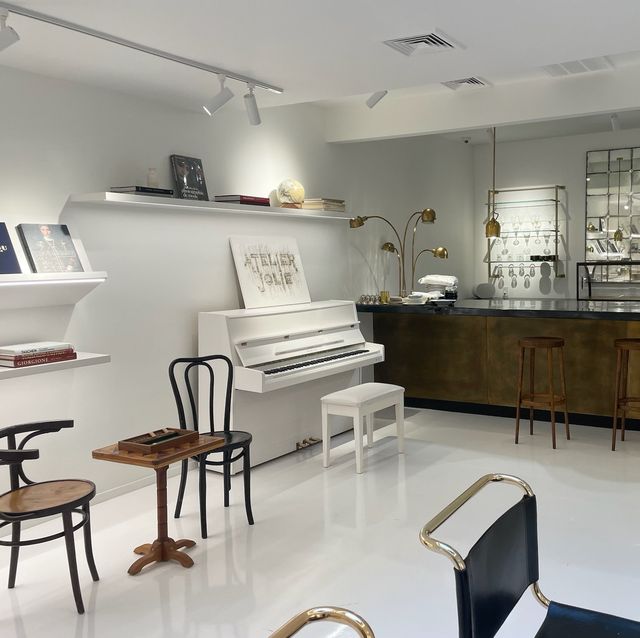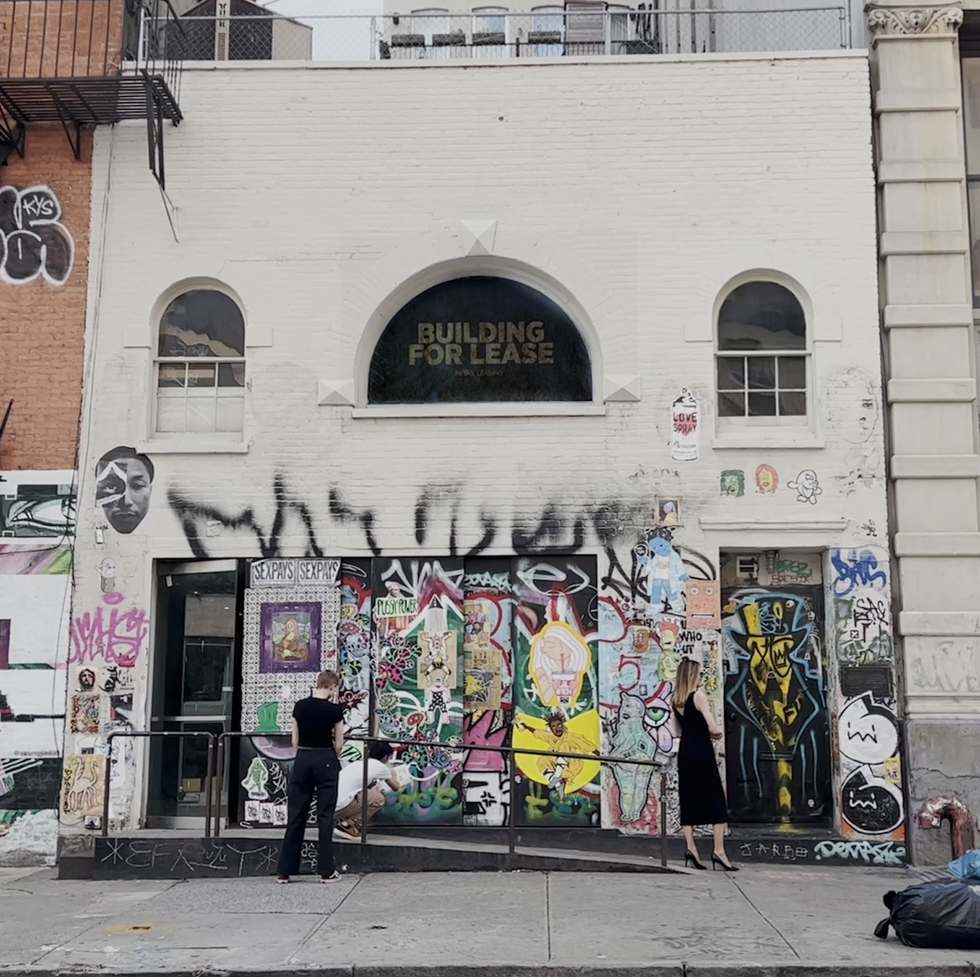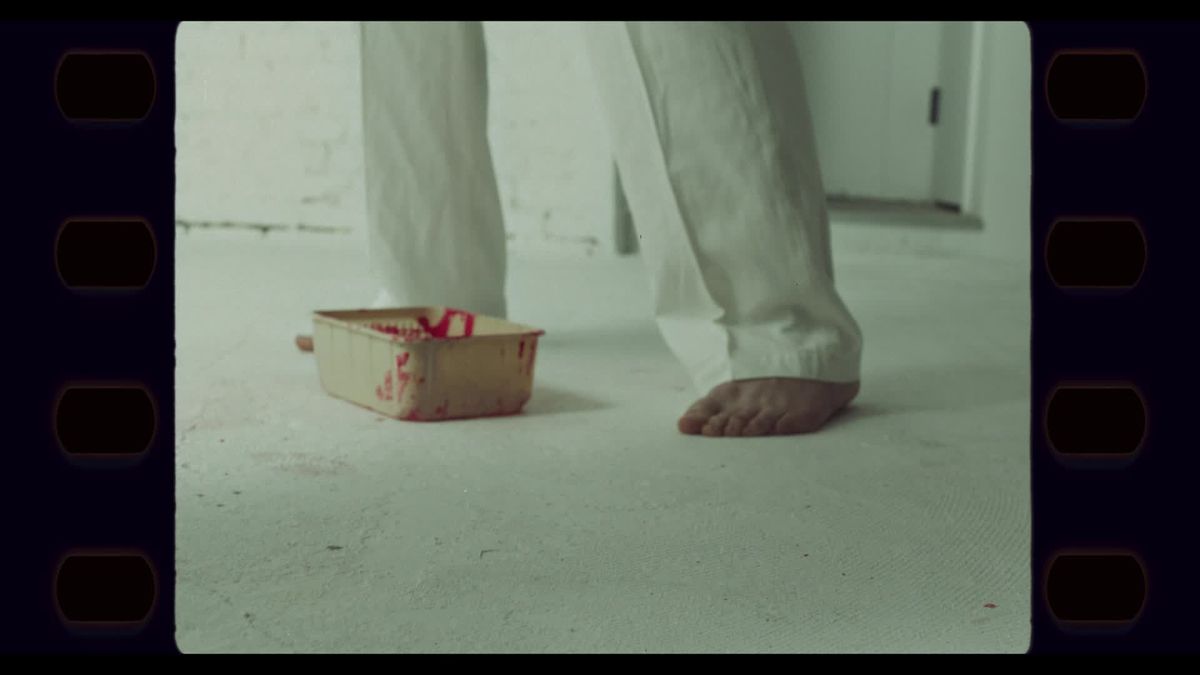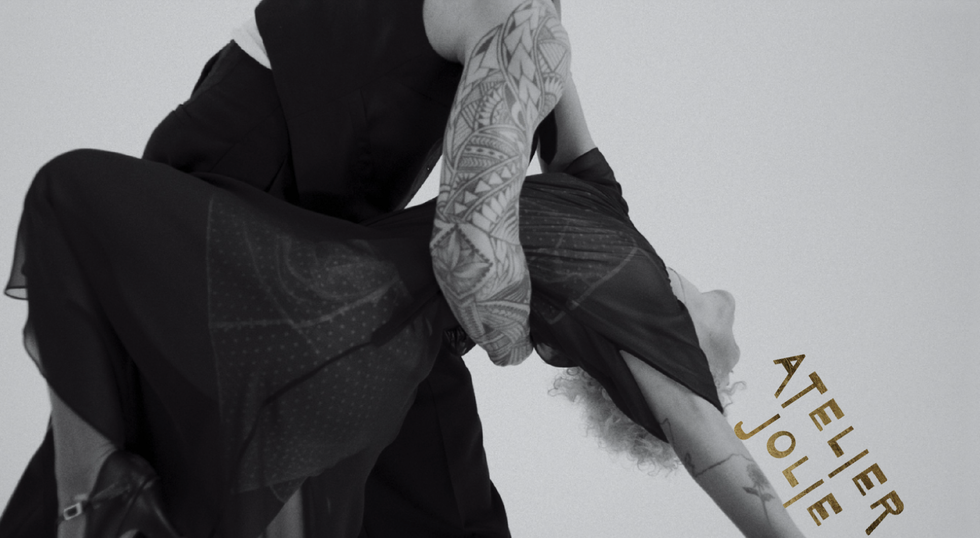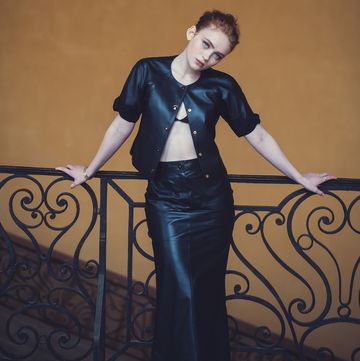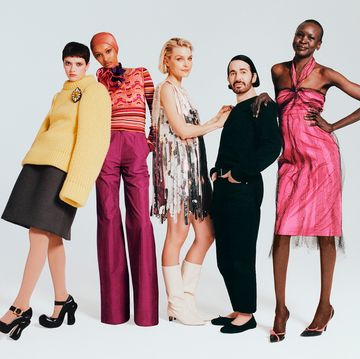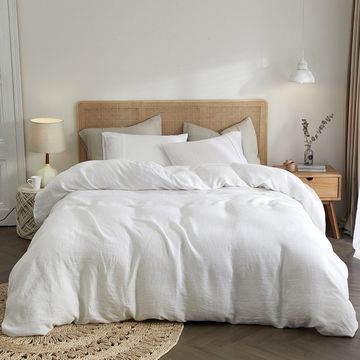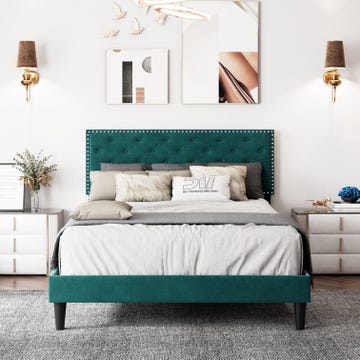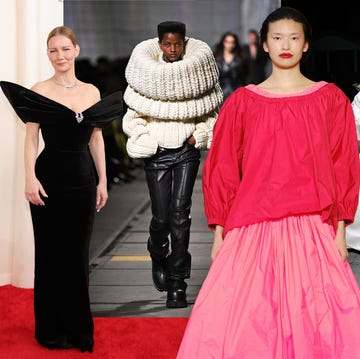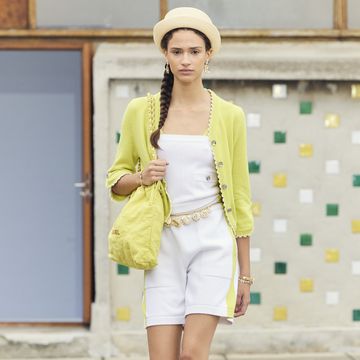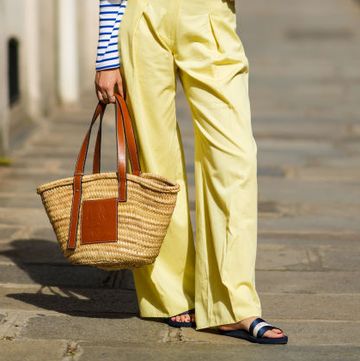Actors enter the fashion game all the time, but they don’t usually do it like Angelina Jolie. Yesterday, the Oscar winner opened the doors to her first retail space, Atelier Jolie, in New York City’s SoHo. This isn’t a mere brand extension, though: As with everything Jolie does, there is a humanitarian angle. “We are a collective that aims to show that an ethical and sustainable lifestyle isn’t a lesser life with limitations,” she explained over email from the set of her upcoming Maria Callas biopic. “It is better quality of life, with personal creativity and community at its center."
The store is set in an art-world landmark, 57 Great Jones Street, a carriage house where painter Jean-Michel Basquiat lived and worked in the 1980s, after renting the space from building owner Andy Warhol. The building is recognizable for its front panels, which have been graffitied many times over by local artists and Basquiat fans throughout the decades. When they renovated, the Atelier Jolie team took great care to keep the integrity of the architecture alive. The front panels will remain intact, though they will slide back to reveal glass windows during daytime hours of operation.
Further in keeping with the space’s artistic sensibility, the store is partly staffed by students and alumni from Parsons School of Design, three of whom gave me a tour earlier this week. The young artists on her team, Jolie said, are “even more inclined to be bold and disruptive, and that thrills me.”
Art-making takes place on the premises, too, as shoppers can work with the team to customize pieces in Jolie’s collection. Made with deadstock and vintage materials, the clothes range from beautifully fluid but sturdy trench coats to crisp suiting and sheer Swiss dot dresses. Customers can pick and choose the pieces they’d like, and one of the team members—all of whom have also been trained in cutting and sewing—will help guide their in-house alterations, including tailoring, patchwork, embroidery, painting, and screen printing. Prices vary, but are democratic: The cost of a jacket with three interchangeable collars is $495, a silk A-line skirt is $195, and a smocked maxi dress starts at $575 and goes up $15 to include or swap out novelty fabrics.
There are also simple white T-shirts available for $15 that can be painted, screen printed, or patched. Proceeds from sales of the patches go to charity, and the artists who’ve lent their work to the patches include Duke Riley, Chaz Guest, and Swoon. And in addition to the Atelier Jolie base collection, there are collections from sustainable fashion brands Bettter, Simon Ungless, Mitsugu Sasaki, We-Ar4, Mimi Plange, and Justin Smith, all of which can be tailored or altered to your liking.
Anyone is also welcome to bring in their own vintage or headstock fabrics, and team members will help you create your own one-of-a-kind piece. As sales associate Peter Damas told me, “We want to be able to help them [customers] get something that feels like it’s a quality piece but also something that they created.”
“They’re the makers, too,” said Noga Bensch, another sales associate. “They’re part of the creative process.”
The back of the ground floor is where the screen printing and patching happen. It is also the only room that isn’t painted white: When the team knocked down the outer walls of this area during renovation, they discovered graffiti-covered surfaces beneath, by all appearances dating back to when Basquiat worked in the building. Downstairs in the basement is the painting room, which is blank now but which they hope to splash with color in the coming months.
Upstairs is the proper atelier space, used for bespoke cutting and tailoring. It is light and airy with exposed wooden beams, three different hand sewing machines, and a back dressing room painted entirely in gold. The furniture and fixtures throughout the building are all upcycled or vintage, and all of the pieces available for purchase are protected by Fairchain—“a digital blockchain platform for fine art and collectibles built to strengthen the connection between creators and the stewards of their work,” as the Atelier Jolie team explained in a statement.
Atelier Jolie houses its own café, too, run by Eat Offbeat, a restaurant and catering collective that showcases the cooking talents of NYC’s refugee communities. Within the café, visitors can sit at the craft table (an antique desk) to draw on patches or pick out vintage buttons and lace from the old silver filing cabinet at the back center of the room.
It’s impossible to walk around the space without noticing the emphasis on creativity and community. As Jolie said, “There is so much happening that divides us, and it’s essential that we create and share time together. One aspect of today’s world is the push to be like others and follow trends. It doesn’t lead to the place where one feels most alive.”
She added, “Discovery and mistakes are essential for creativity. The once-young punk in me wanted to push against what was normal and paint the walls with the people I love. I hope others do, too.”
Below, here’s an exclusive look at Atelier Jolie’s first collection, now available in the Great Jones space and online, worn by young actors and performers.

Brooke Bobb is the fashion news director at Harper’s Bazaar, working across print and digital platforms. Previously, she was a senior content editor at Amazon Fashion, and worked at Vogue Runway as senior fashion news writer.
